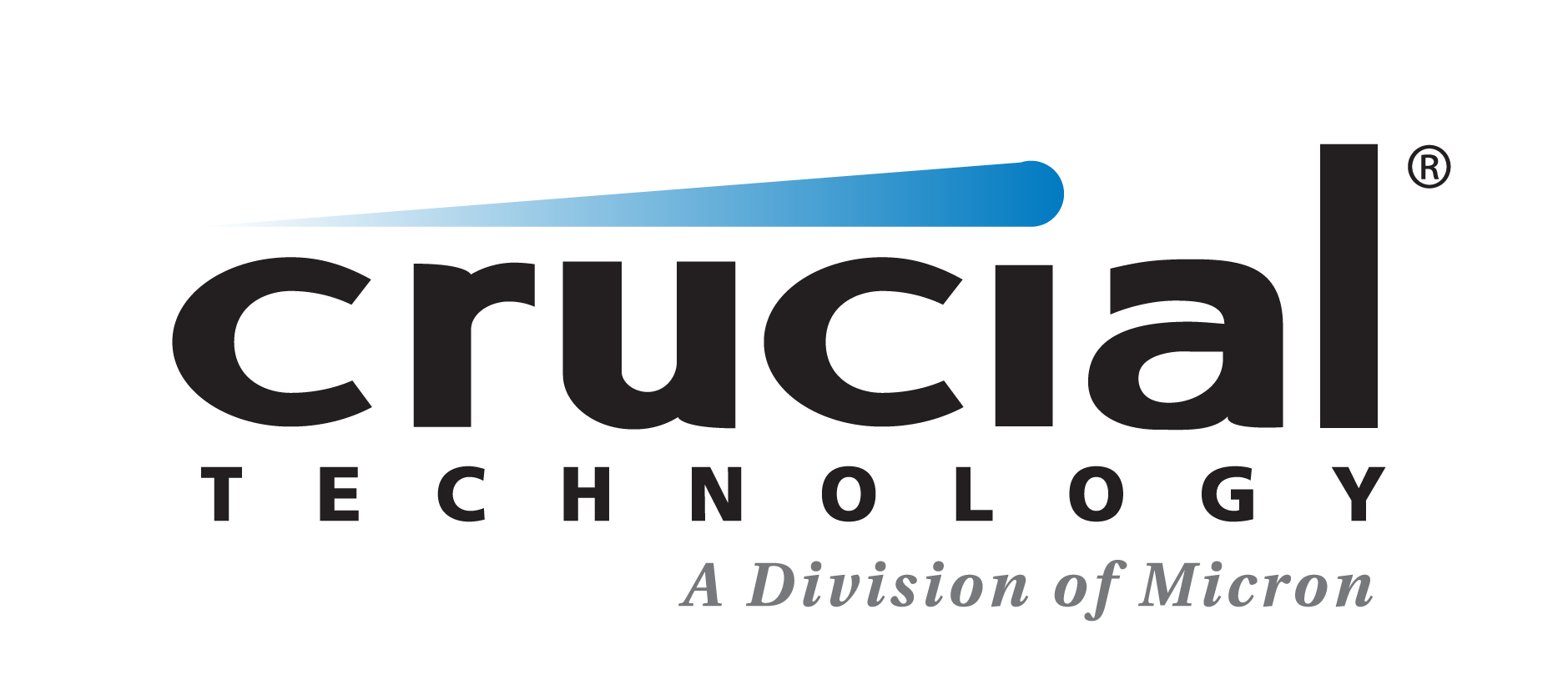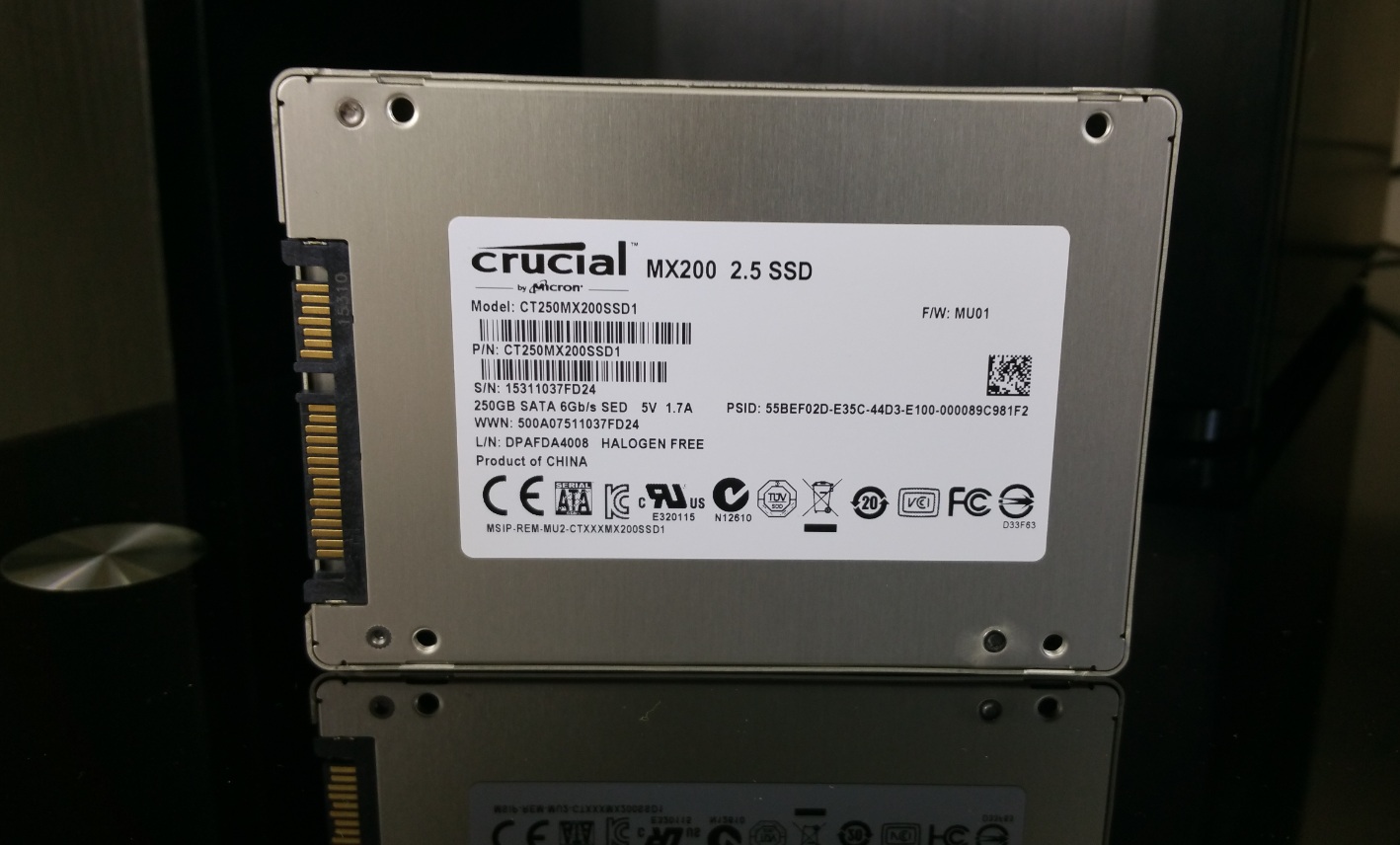Last time with Crucial we reviewed their BX entry level SSD.
Today we are entering the MX series thus marketed as a higher grade product.
The MX series replaces the M600 series from last year.
Crucial
Crucial is a global brand of Micron Technology, Inc., one of the largest memory and flash storage manufacturers in the world also ranked among the Top 5 Semiconductor producing companies in the world.
They make computer memory upgrades (DRAM) and solid state drives (SSDs), and offer more than 250,000 upgrades for over 50,000 systems.
Price when reviewed: £ 70.97 - via Amazon.co.uk
Crucial CT250MX200SSD1 MX200 SATA 2.5-inch Internal Solid State Drive with Adapter - 250 GB
Presentation
The MX200 sports the same Marvell 88SS9189 controller with Crucial-Micron’s custom firmware and Micron’s 16nm MLC NAND, but the biggest change compared to the MX100 is the addition of Dynamic Write Acceleration (DWA), which is the company’s SLC cache implementation, also introduced with the M600.
Basically, all empty NAND runs in SLC mode, so the size of the cache shrinks as data is written to the drive, let’s say something like Samsung’s Turbo mode.
We will see how it handles because only the 250 GB model has it (besides the M.2 and mSATA variants)
Moving to the specs - we noticed an improvement from 72 TB endurance rating compared to the BX100 250 to 80 TB.
But as we know these are pessimistic numbers, SSDs can endure more than the official numbers.
And the over provision is set at 9.1%.
Also to mention their proprietary SSD software suite – the Storage Executive
http://uk.crucial.com/gbr/en/support-storage-executive
Crucial® Storage Executive
Optimize your Crucial SSD with the Crucial Storage Executive tool.
This free downloadable tool allows you to easily:
– Update your drive to the latest firmware
– See how much storage you’ve used
– Monitor your drive’s operating temperature and overall health
– Reset the drive’s encryption password
– Verify your drive’s model number and more
The Crucial Storage Executive is compatible with Microsoft® Windows® 7 or newer, and works with the Crucial M500, M550, MX100, MX200, and BX100 SSDs.
Packaging and content
Comes in a very nice and simple box with all the relevant information printed on both sides.
Inside we have a 9.5mm spacer.
The MX200 250 GB SSD has a very soft metallic finish.
Testing methodology
- Synthetic and real life tests.
- All test subject with identical content.
- All SSDs were secure-erased before our test suite
- Steps have been taken to ensure that Sandy Bridge’s power-saving features don’t interfere with any of our results. All of the CPU’s low-power states have been disabled.
- In order to minimize random variation, each of the real-life performance tests is run a few times with reboots in-between tests to minimize the impact of disk cache.
Hardware used:
CPU: Intel i7 2600k TDP 95 W
Motherboard: Asus P8H67-M PRO
Memory Modules: 2x 4 GB DDR3 Crucial Ballistix Tactical Tracers 1600 Mhz
PSU: SeaSonic S12II 500W
Video: Gigabyte GTX 970 G1 Gaming
Software:
Windows 7 Ultimate X64 SP1
Crystal Disk Mark v3.0.2
HD tune Pro v5.50
AIDA64 Disk Benchmark
ATTO v2.47
IOMeter
Results
Power Consumption
We tested power consumption under load with IOMeter’s workstation access pattern. Idle power consumption was recorded within two minutes after processing Windows 7’s idle tasks on an empty desktop.
So here are the numbers: 0.40 watts in idle and up to 2.61 W in full load on our benchmarks. Almost the same as the BX brother, so again good numbers from this point of view.
Analysis
Judging by the numbers alone we see improvements over the BX series.
Not much but they are present.
But they don’t tell the whole story.
Yes, new features, higher endurance ratings, more extras like hardware encryption but if you don’t need such features that it’s hard to recommend such a drive especially when the mid-range is highly populated by so many options.
Price-wise, it depends on what offers you may find so if the gap between the BX and MX series becomes smaller ad smaller (for now on amazon.co.uk we see only 10 pounds between the 250 BX and MX), then the MX should be worth it.
Conclusion
The good:
- Good all-around performer
- Good price/performance value, depending on online offers/retailers
- 7 mm thin—ultrabook compatible
- 3 years warranty
- Higher endurance ratings
- Provides hardware encryption
The bad:
- Victim of their own success, the BX series is very good so the MX series didn’t supersede it by that much considering the price and if you don’t really need those extra features
- The Dynamic Write Acceleration we didn’t see that much of a spectacular jump in performance










